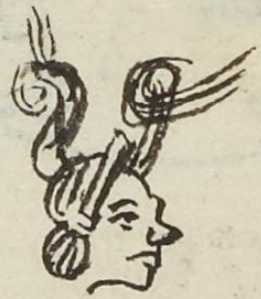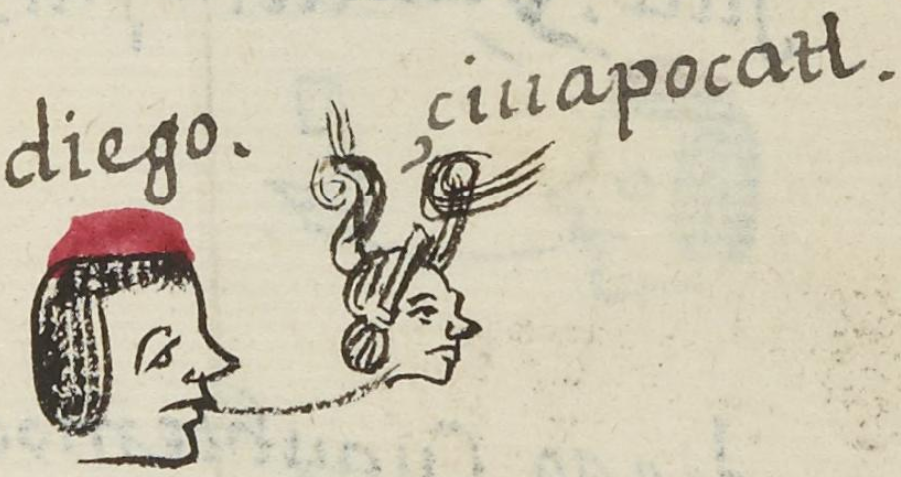Cihuapocatl (MH672r)
This black-line drawing of the compound glyph for the personal name Cihuapocatl (“Woman-Smoke”) is attested here as a man’s name. The glyph shows the head of a woman in profile facing toward the viewer’s right. Two curls of smoke come up from the points of her hair on the top of her head. The smoke rather merges with the hair/
Stephanie Wood
Note how the smoke forms a pair of rising curls merged with hair, reinforcing the woman's hairstyle called the neaxtlahualli. Popoca, which in some other glyphs involves multiple curls of smoke, underlining the alphabetic reduplication with a visual one, if somewhat different from this representation of poctli. The translation of this name may well leave something to be desired. What is woman-smoke or female smoke? Is the name meant literally?
Stephanie Wood
diego. çiuapocatl.
Diego Cihuapocatl
Stephanie Wood & Jeff Haskett-Wood
1560
Jeff Haskett-Wood
humo, mujeres, pelo, cabello, nombres de hombres

cihua(tl), woman, https://nahuatl.wired-humanities.org/content/cihuatl
poca(tl), smoke (rare form), https://nahuatl.wired-humanities.org/content/pocatl
posiblemente, Humo de Mujer
Stephanie Wood
Matrícula de Huexotzinco, folio 672r, World Digital Library, https://www.loc.gov/resource/gdcwdl.wdl_15282/?sp=424&st=image.
This manuscript is hosted by the Library of Congress and the World Digital Library; used here with the Creative Commons, “Attribution-NonCommercial-ShareAlike 3.0 License” (CC-BY-NC-SAq 3.0).







